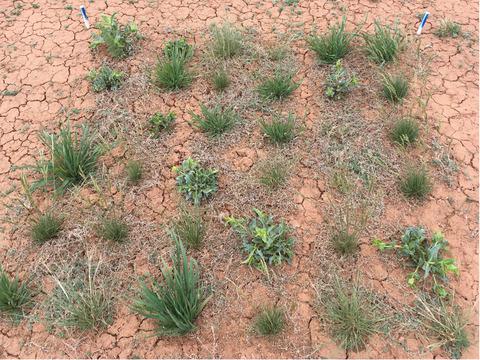Our official English website, www.x-mol.net, welcomes your
feedback! (Note: you will need to create a separate account there.)
Directional selection shifts trait distributions of planted species in dryland restoration
Journal of Ecology ( IF 5.3 ) Pub Date : 2021-11-18 , DOI: 10.1111/1365-2745.13816 Kathleen R. Balazs 1, 2 , Seth M. Munson 3 , Caroline A. Havrilla 3, 4 , Bradley J. Butterfield 1, 2
中文翻译:

定向选择改变旱地恢复中种植物种的性状分布
更新日期:2021-11-18
Journal of Ecology ( IF 5.3 ) Pub Date : 2021-11-18 , DOI: 10.1111/1365-2745.13816 Kathleen R. Balazs 1, 2 , Seth M. Munson 3 , Caroline A. Havrilla 3, 4 , Bradley J. Butterfield 1, 2
Affiliation

|
- The match between species trait values and local abiotic filters can restrict community membership. An often-implicit assumption of this relationship is that abiotic filters select for a single locally optimal strategy, though difficulty in isolating effects of the abiotic environment from those of dispersal limitation and biotic interactions has resulted in few empirical tests of this assumption. Similar constraints have made it difficult to assess whether the type and intensity of abiotic filters shift along gradients of environmental harshness, as predicted by the stress-dominance hypothesis.
- We planted 9,216 plants of 29 perennial grass and forb species that had a range of functional trait values and were assigned to a warm, intermediate or cool temperature tolerance pool across eight sites on the Colorado Plateau. We compared the distributions of traits of surviving individuals to null distributions to evaluate whether there were shifts in trait means and variation. Borrowing from phenotypic selection concepts in evolutionary biology, we assessed support for stabilizing, directional and disruptive abiotic filtering of trait distributions and whether these types of filtering varied with initial species pool.
- Functional composition was significantly different from null distributions for nearly all traits at all sites, with trait variation more restricted in harsher abiotic conditions, supporting the stress-dominance hypothesis. Contrary to expectations, we primarily found evidence for directional selection, which increased in frequency in warm species pools while disruptive selection was found more often in cool and intermediate species pools.
- Synthesis. This study provides a controlled experimental approach to test the effect of the abiotic environment on plant trait filtering. We found that opportunistic strategies allowing for rapid water acquisition during favourable periods improved survival at warmer sites. Species with these strategies may be expected to benefit from increasing aridity and may be selected for active management efforts. More generally, the prevalence of directional selection may have important implications for dynamic vegetation models that rely on trait distributions for translating environmental variation into ecosystem processes.
中文翻译:

定向选择改变旱地恢复中种植物种的性状分布
- 物种性状值与当地非生物过滤器之间的匹配会限制社区成员资格。这种关系的一个经常隐含的假设是非生物过滤器选择单一的局部最优策略,尽管难以将非生物环境的影响与扩散限制和生物相互作用的影响区分开来,导致对该假设的实证检验很少。类似的限制使得很难评估非生物过滤器的类型和强度是否会随着环境恶劣的梯度而变化,正如压力优势假设所预测的那样。
- 我们种植了 29 种多年生草和杂草的 9,216 株植物,这些植物具有一系列功能性状值,并被分配到科罗拉多高原八个地点的温暖、中等或凉爽的耐温池中。我们将幸存个体的性状分布与零分布进行比较,以评估性状均值和变异是否发生变化。借鉴进化生物学中的表型选择概念,我们评估了对性状分布的稳定、定向和破坏性非生物过滤的支持,以及这些类型的过滤是否随初始物种库而变化。
- 几乎所有地点的所有性状的功能组成都与零分布显着不同,性状变异在更恶劣的非生物条件下受到更多限制,这支持了压力优势假设。与预期相反,我们主要发现了定向选择的证据,在温暖的物种池中频率增加,而在凉爽和中间的物种池中更常见的是破坏性选择。
- 合成。本研究提供了一种受控实验方法来测试非生物环境对植物性状过滤的影响。我们发现,允许在有利时期快速获取水的机会主义策略可以提高温暖地区的生存率。采用这些策略的物种有望从干旱加剧中受益,并可能被选中进行积极的管理工作。更一般地说,定向选择的流行可能对依赖特征分布将环境变化转化为生态系统过程的动态植被模型具有重要意义。











































 京公网安备 11010802027423号
京公网安备 11010802027423号